Vegetable Companion Planting Chart PDF
If you want a quick tip to help you grow a healthier garden, then this article on companion planting is just what you need. Get your free Vegetable Companion Planting Chart PDF below and use it to start a backyard garden full of amazing organic vegetables. How and what to plant where so your garden grows bigger and better.
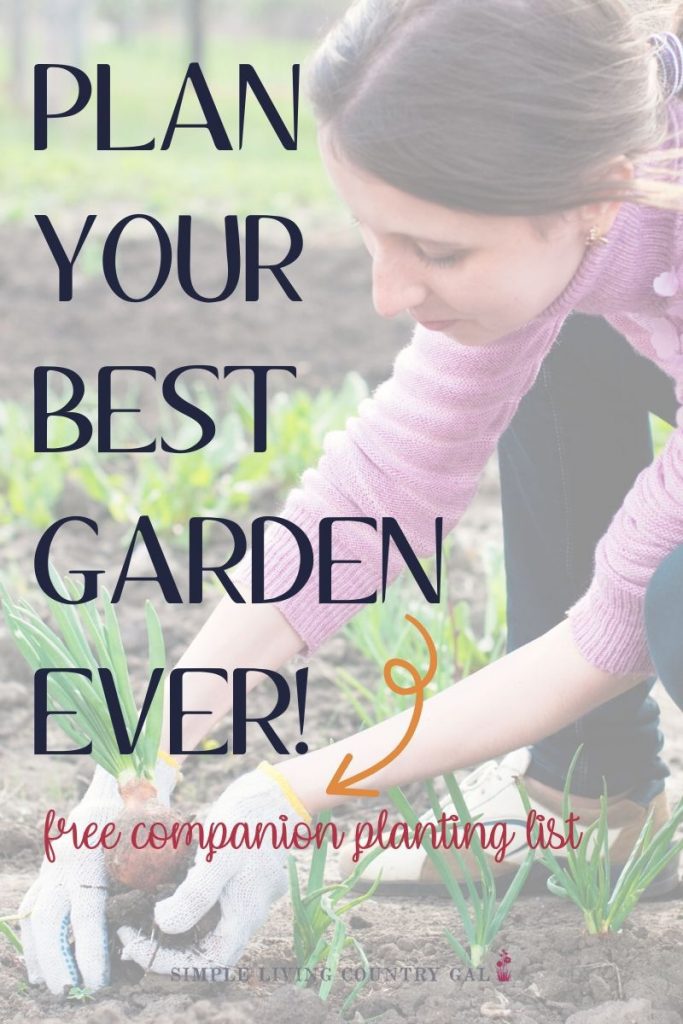
Companion gardening is a great way to help your plants thrive and, using their natural defenses, help you grow organic more easily. From vegetables to herbs, to flowers, all plants grow better next to a companion.
But just like people, not any companion will do. Planting the wrong plants next to each other can do more harm than good. Knowing what plants work well together is an important part of a successful garden.
Companion planting has several amazing benefits that can help your vegetable garden flourish if planted right. Let’s take a look.
Benefits of Vegetable Companion Planting
Knowing which plants grow best near others and why will help you to setup a garden in the healthiest way.
Benefit #1. Pest Control
It’s amazing that certain plants when planted near other plants will help to protect from pests in the garden.
Pests will have a more difficult time finding a patch of their favorite plant if it’s protected by a plant they don’t like. And some plants, like herbs and flowers, put off a naturally deterrent scent.
For instance, planting marigolds next to a patch of beans can help deter bean beetles, and if you plant them near tomatoes, they will keep away Hornworm Caterpillars, the creepy guys.
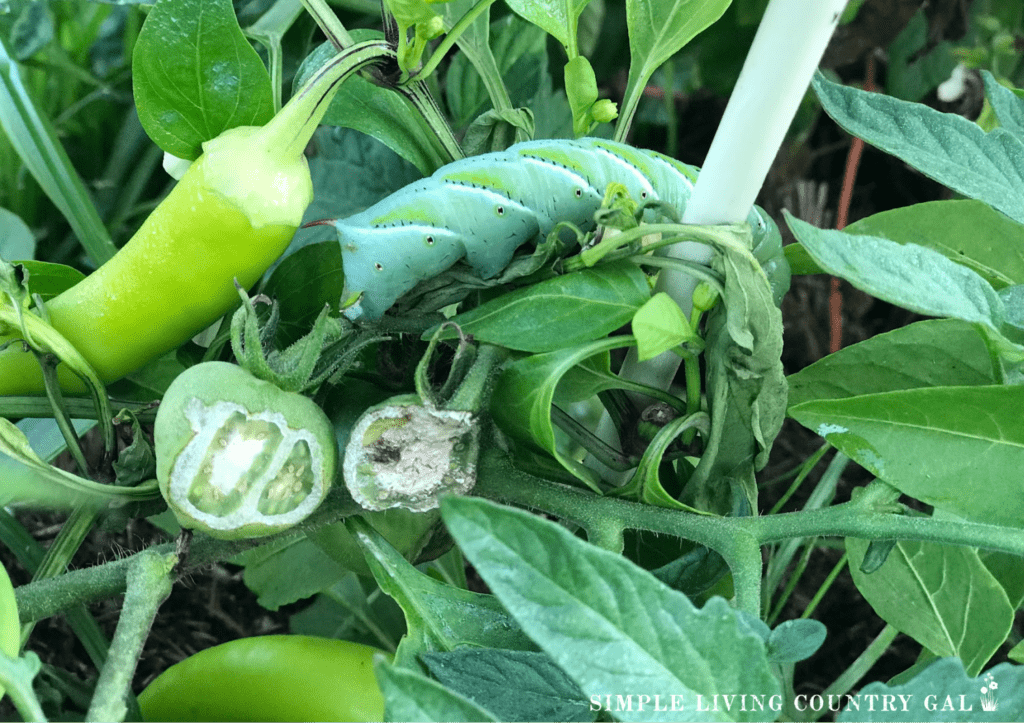
Keeping pests out of your garden naturally allows you to grow organic with more ease.
Benefit #2. Support
Some plants can provide the necessary support for each other while they grow. The ancient Cherokee Indian practice of three sisters helps to provide a nice harvest of three vegetable companion plants.
Plant corn first and allow it time to grow a few inches, then plant squash and beans. The corn will provide a natural trellis for beans. The beans will feed the necessary nitrogen needed to the corn. And the squash grows along the ground keeping weeds out and providing shade for the bean and corn roots. They also repel each other’s pests.
Planning your garden so that plants can support each other allows you to plant more and provides a better harvest.
Benefit #3. Saves Space
If your garden area is small, companion planting will help you make the most of your space.
You can plant a ground growing vining plant under a taller plant to fill in space that would otherwise allow weeds to grow. Or you can grow fast-growing crops between slower growing ones.
For instance, radishes and green onions grow quickly. Plant them into any empty area around plants that will take a while to sprout, like lettuces, and they’ll be ready to harvest before your other plants start to fill up space.
This really is helpful if you are planting a container garden on your back porch. The more you can grow in your containers the more you can enjoy all summer long.
READ: CONTAINER GARDENING TIPS
Benefit #4. Keeps the Soil Moist
Vegetable companion plants can help keep their partners well nourished. Vining plants like squash and cucumbers provide shade to the soil around other plants so moisture stays in the soil instead of evaporating.
If you experience long droughts in the summer, this will help to keep your garden healthy without the need to constantly water it.
Benefit #5. Reduces Weeds
There is nothing I dread more than weeding and if there is anything I can do, such as companion gardening, to cut down on it, I am game.
Covering the ground with vining plants does more than just shade the soil and keep moisture in, it also helps to prevent weed growth.
Cucumbers and squash are excellent crops to keep your garden weed-free. If the ground is covered, there’s no place for the weeds to grow.
READ: HOW MULCHING YOUR GARDEN STOPS THE WEEDS
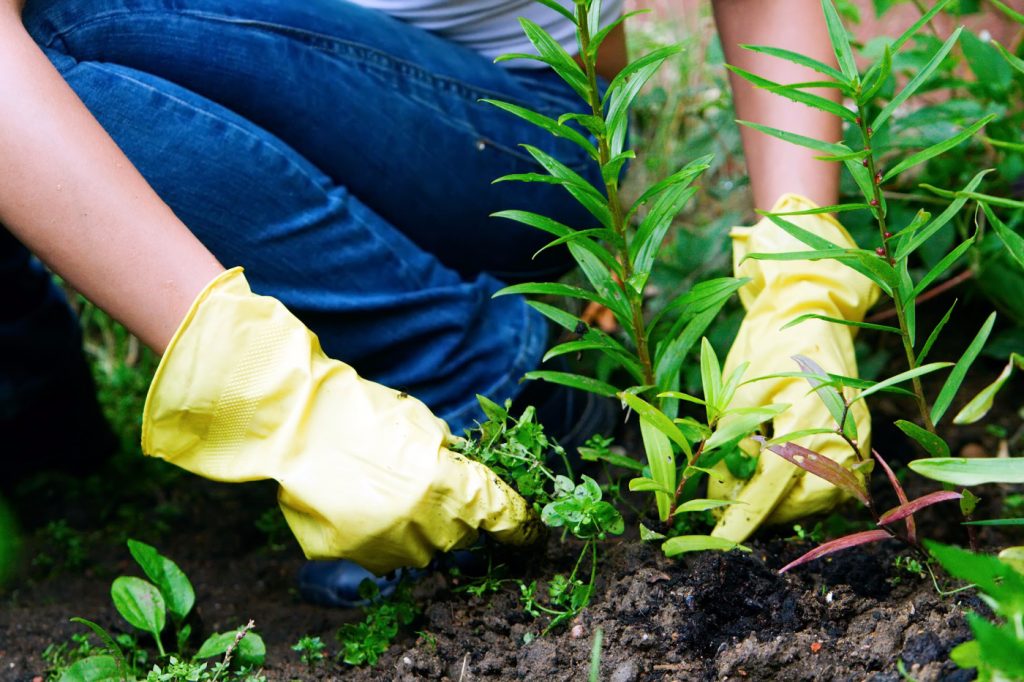
Benefit #6. Helps with Disease Issues
When you have a large grouping of the same type of plant, disease spreads easier and faster among that plant. Adding a variety of plants to your garden can break up the grouping and slow down the spread of diseases.
Some plants even help others by making them less susceptible to disease. Take a look at the three sisters’ method that I talked about above. By planting this way, you can use the beans to provide healthy nitrogen to the corn. Another good example is growing basil with tomatoes; it makes your tomato plants healthier.
Putting plants to work for you is another great way to grow a bigger and healthier garden.
Benefit #7. Attracts Pollinators and Beneficial Insects
Mother nature is at it again, and she has provided us with some insects are actually beneficial to your garden and can help it produce a bigger crop. These insects are more likely to spend time in your garden if they have something good to nibble on and a good environment.
Spreading flowering cover around your garden can welcome these beneficial insects in. Good examples of flowering covers include clover, buckwheat, and vetch. To make the most of this planting method, choose varieties that have extended bloom periods.
Benefit #8. Provides Natural Trellises
We’ve looked at using corn as a trellis in the three sisters’ example, but there are other plants that can serve as a trellis for tall plants. Companion flowers, Jerusalem artichokes, sorghum, amaranth, fruit trees, and nut trees are all good plants for providing a natural trellis.
Benefit #9. Improves Flavors
Basil is a great companion plant for many types of plants. It’s especially good to plant with lettuce and tomatoes because it improves the flavor of them. As an added bonus, it also repels mosquitos.
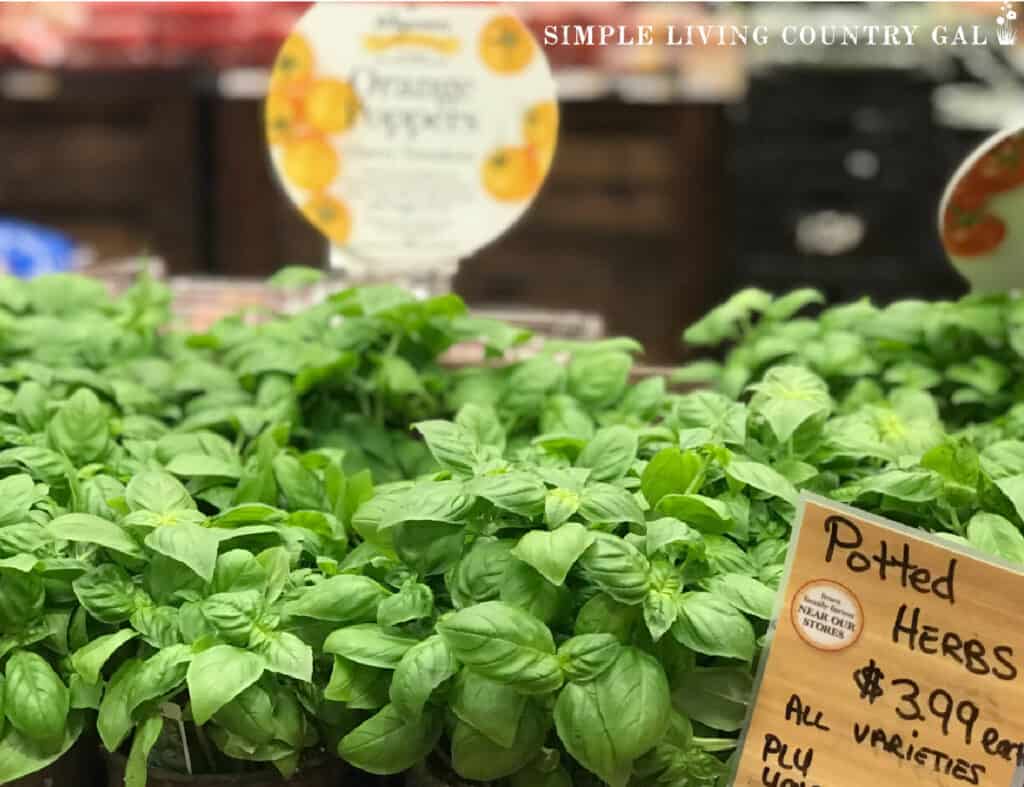
An added bonus of companion planting is there are a variety of companion plants that will improve the flavor of the plants they’re grown near.
Benefit #10. Allows for More Variety
You can plant a few varieties of beans, tomatoes, peppers, or almost any other kind of vegetable in areas you need to fill-in. Using the vegetable companion planting method, you’ll be able to plant more of a variety of plants and use them to benefit your other plants.
With all the benefits of companion vegetable gardening, it only makes sense to use this planting method. After all, it benefits your plants, allows you to grow better crops, and allows you to garden organically with little effort.
But, as we mentioned earlier, there are some companion gardening plants that don’t do well together. Beans should not be grown near onions; they are better planted with corn, marigolds, or potatoes as these plants will protect them from Mexican bean beetles. Onions are, however, great partners for tomatoes and carrots.
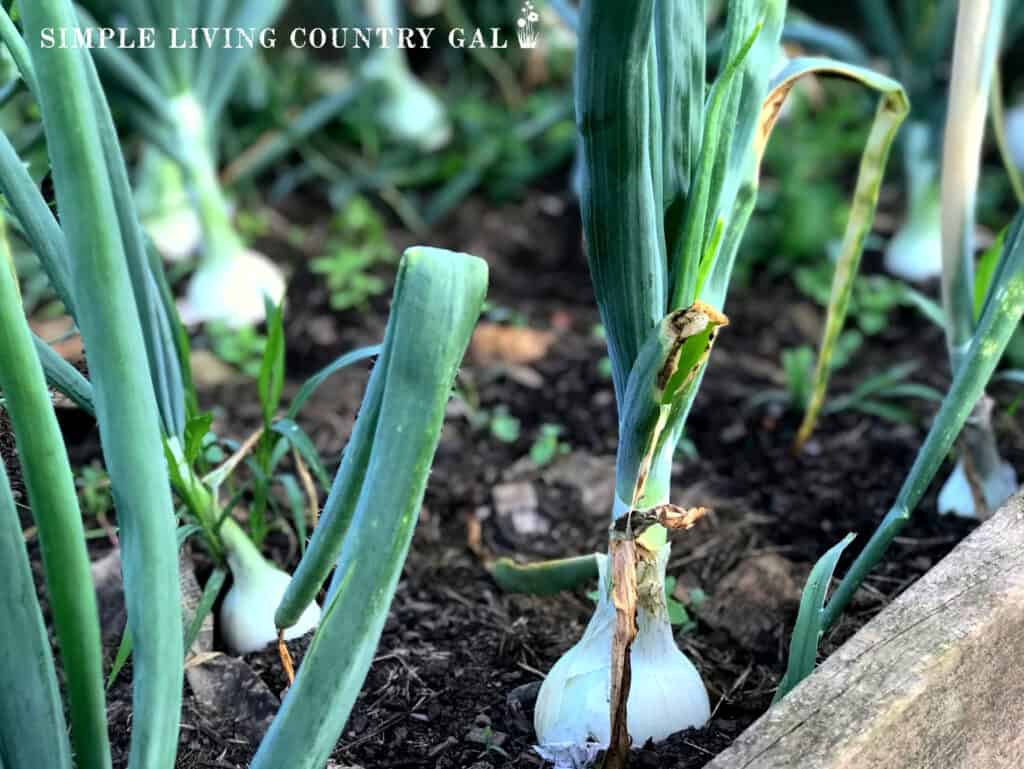
And tomatoes grow well with carrots and basil. In fact, tomatoes provide great shade for plants like onions and carrots. They keep the soil from getting too hot.
Cucumbers should avoid the company of potatoes, but love to be paired with beans, cabbage, corn, and radishes.
Peppers flourish with carrots, onions, parsley, tomatoes, and basil but should be kept away from cabbage or fennel.
And garlic should never be grown near peas or beans, but it does well with cabbage, tomatoes, and most kinds of fruit trees.
Herbs grow well with almost anything so it’s a great idea to intermix them around your garden. They deter pests and they’re friendly with almost all types of plants. A few herb companions to avoid include:
- Oregano, parsley, thyme, and sage with cucumbers
- Rosemary and dill with carrots
Let’s take a look at some good vegetable/herb companions:
- Rosemary makes a great companion for beans, cabbage, and carrots.
- Parsley is great with corn, tomatoes, and even roses.
- Sage works well with carrots, cabbage, and tomatoes. In fact, tomatoes tend to grow better when sage and basil are nearby.
- Dill enhances the flavor of cabbage, cucumbers, lettuce, and onions.
Herb Resources:
Let’s take a look at a few companion examples that you can use in your backyard garden this growing season.
Companion Gardening Planting Examples
Tomatoes
Tomatoes and basil make a great combination in the kitchen and in the garden. Basil helps tomatoes grow better, producing a higher crop, and it repels flies and mosquitos. Marigolds are another great companion as they repel garden pests. Tomatoes enjoy the company of asparagus, carrots, onions, celery, lettuce, spinach, and parsley.
Tomatoes are not good companions with cabbage, peas, fennel, beets, dill, and rosemary. They also need to be kept away from corn and potatoes as they can share and spread some of the same diseases and pests.
Green Beans
Corn grows well with most bean varieties because the beans can use the corn stalks as a trellis. Beans also provide nitrogen-rich soil which is beneficial for the corn. Rosemary, marigolds, nasturtiums, and summer savory help to repel bean beetles. Summer savory also helps to improve the flavor and growth of beans. Other friendly companions include Brussels sprouts, cabbage, broccoli, cucumbers, potatoes, radishes, and peas.
Green beans are not good companions with beets or any kind of onion.
Peppers
Peppers love basil, especially since the basil helps to repel insects and pests. And basil has been known to improve the flavor of the peppers. Other good companions are spinach, tomatoes, and onions.
Peppers are not good companions with beans of any kind. The vines will spread through the pepper plants.
Cucumbers
Marigolds and nasturtiums help to repel beetles and aphids from cucumbers. Celery, corn, beans, lettuce, dill, radishes, and peas also make good companion plants.
Cucumbers are not good companions with any kind of aromatic herb like sage.
Lettuce
Planting mint with your lettuce will keep slugs at bay. Chives and garlic are good aphid repellants. Beets, broccoli, carrots, beans, corn, peas, radishes, and marigolds all grow nicely with lettuce.
Lettuce is not good companions with parsley because it will crowd the lettuce.
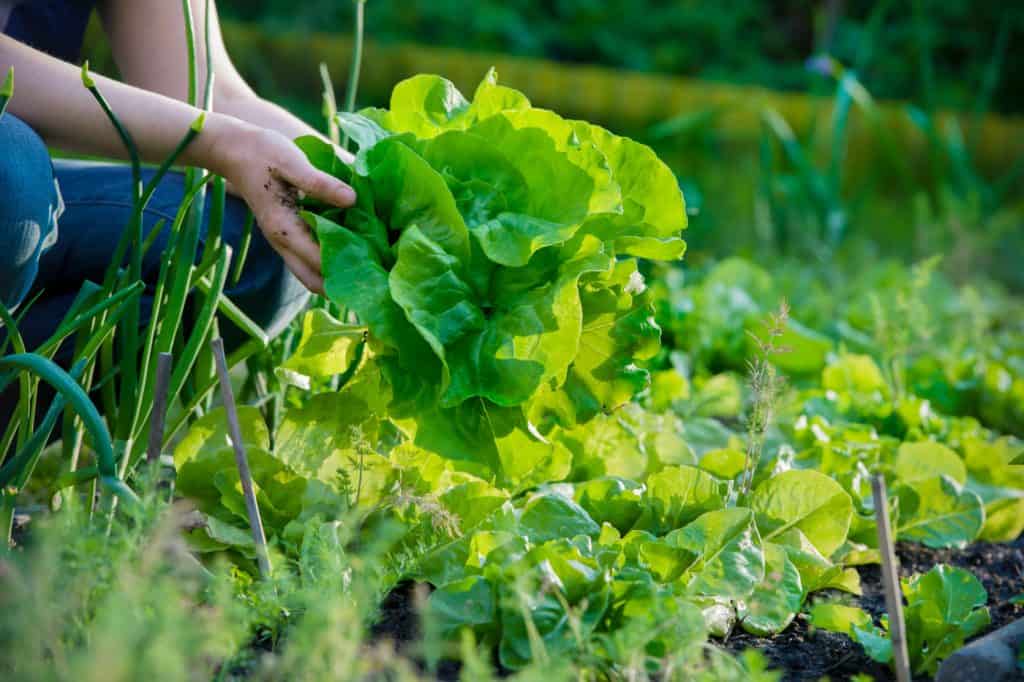
Onions
Onions are a good friend for carrots because they will repel carrot flies. They also repel aphids so planting them near aphid-prone and onion-friendly veggies create natural pest control. Beets, lettuce, cabbage, parsnips, and tomatoes are all good vegetable garden companions. They also work well with marjoram, savory, and rosemary.
How to Grow Reading:
Onions are not good companions for asparagus, peas, or beans.
Carrots
Carrots are sensitive to heat so they need a companion that will provide them some shade. Tomatoes work well for this task. Tomatoes also help to produce natural pest control. But it’s not a one-sided relationship; tomatoes benefit from carrots too. Carrots aerate the soil for the tomato plant roots, allowing them to receive more air and water. Leeks are another nice companion since leeks repel carrot flies and carrots repel leek moths. Rosemary, chives, and sage are also good repellants
Carrots are not good companions for dill and coriander because they can harm carrot plants. Also, parsnips suffer from the same pests and diseases as carrots so keep them apart to prevent an infestation.
Zucchini/Summer Squash
Corn makes an excellent companion for squashes because it gives them plenty of space to grow. And the squash can keep weeds from growing up among the corn stalks. Squash also does well with peas, beans, radishes, marigolds, and dill.
Squashes are not good companions for potatoes; they’re both prone to blight.
Double Chocolate Zucchini Bread
Radishes
Radishes are a good friend to cucumbers because they attract cucumber beetles away. They also do great with carrots because they are harvested early and they can loosen the soil for carrots, giving them more room to grow. Beets, cabbage, kale, lettuce, spinach, onions, and squash also make great vegetable garden companions.
How to Grow Reading:
Radishes are not good companions for hyssop.
Sweet Corn
Corn grows well with nitrogen in the soil, so most kinds of beans, especially green beans, are a great companion. Cornstalks also benefit climbing plants by becoming a natural trellis for them so any kind of bean, cucumbers, peas, pumpkins, and melons all make good companion vegetables. Zucchini and squash also grow well along the ground in the space provided by the stalks as they grow tall, and the keep the ground shaded for the corn.
How to Grow Reading:
Corn is not good companions with tomatoes because they can both be attacked by corn earworms, spreading pests and disease.
Companion garden plants can help your garden thrive and produce bigger crops. Companion planting also allows you to grow organically because the plants serve as natural pesticides and soil nutrients.
When it comes to companion gardening, the best way to plant is to plan ahead. Decide what kinds of plants you want to grow, how long they take to harvest, and research what plants grow well (or don’t grow well) together. Planning ahead will allow you success from the start.
Plants that harvest early can be planted between plants that take longer to grow, allowing you more useable space in your garden. And planting using the three sisters method will also provide more space by growing three plants in the same area and allowing them to benefit each other in their growth.
If your garden area is small or you want to grow your garden more organically, companion gardening is the way to go. You’ll be able to garden more naturally, you’ll save time and space, and all while benefitting your garden to produce a bigger, better, and tastier harvest.

Tracy,
Im a big fan of companion planting and have been doing that for a few years now. You’ve got some good info here!
Thank you, Lisa!
Having a hard time finding the link for the vegetable companion chart. Got the herbal one fine, thank you! Help?
Thank you for letting me know, all fixed now!
never seen a pdf…… eyes are not great, but theres a lot of ads, and pop up’s, but didn’t see the pdf
Sorry about that! Yes, it is at the end of the article. You will need to type in your email address so our team can send it to you. Look for a big picture at the bottom with the checklist on it!